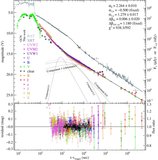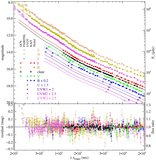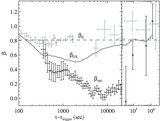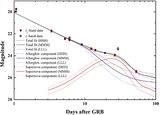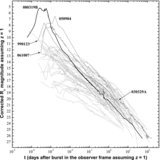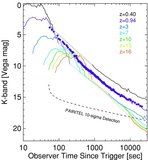Image Details
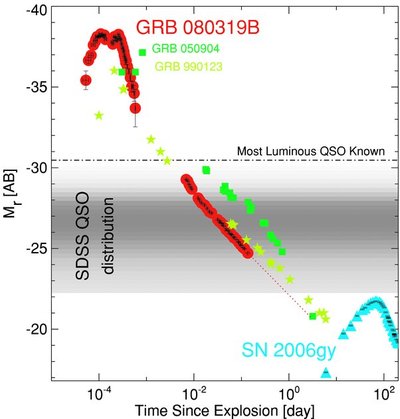
Caption: Figure 8.
Rest-frame comparison of the most luminous optical/IR probes of the distant universe, showing the absolute magnitude ( M r , in AB magnitudes as defined by Oke & Gunn 1982) vs. time of GRB 080319B (red circles) and SN 2006gy (blue triangles; Smith et al. 2007). Transformed light curves of GRB 990123 (yellow stars; adapted from Galama et al. 1999) and GRB 050904 (green squares; adapted from Kann et al. 2007a) are also shown. For reference, the most luminous known QSO (Schneider et al. 2007) is shown with a dashed horizontal line; the distribution of SDSS QSO magnitudes, adapted from Figure 6 of Schneider et al., is shown as horizontal banding (darker indicates higher density of sources per unit magnitude). The afterglow of GRB 080319B was the brightest GRB afterglow ever recorded and was at early times ~10 3 times more luminous than the most luminous QSO.
Copyright and Terms & Conditions
© 2009. The American Astronomical Society. All rights reserved.


